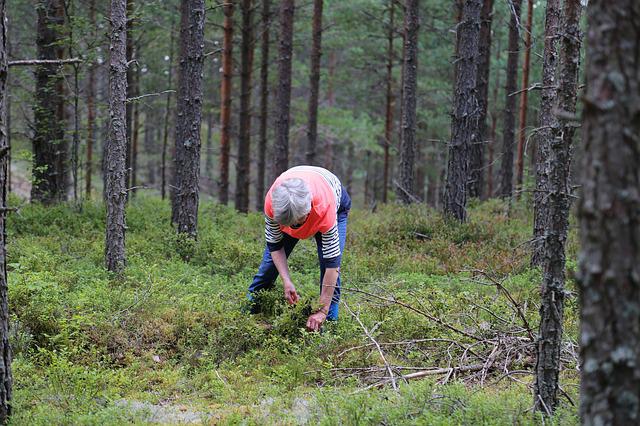When To Prune Blueberries?

While the bushes are still dormant, pruning established blueberry bushes is the best time. For an annual pruning, we recommend doing this in the winter. Pruning is out of the question in early spring because the berries have already begun to form. Young canes are generally reddish and lack the shredded bark that characterizes older canes. Berries are produced on these canes.
Remove branches that are damaged or cross over during the winter months. Remove low-lying branches and any that may contact the ground if the berries fall from them. Save two to four-year-old canes with a strong, upright stem and remove canes older than seven years. The tallest canes should be lowered to a more manageable height.
Every winter, it’s a good idea to remove the two oldest canes completely. Blueberry bushes that produce fruit should be pruned with a narrow base and an open crown that allows the sun to shine through.
Table of Contents
Reasons Why Pruning is Important
- For a variety of reasons, pruning blueberries is a necessary winter task.
- Proper pruning techniques can be achieved by maintaining an open growth habit, which improves air circulation and exposes the plant’s core to sunlight.
- Keep disease at bay by pruning your blueberries. Pruning Blueberry plants provides an excellent opportunity to remove any diseased canes.
- Annual pruning encourages the growth of new fruiting stems, which maintains productivity.
- Since the shrub can devote more energy to producing fruit, not leaves, pruning improves fruit quality by allowing it to produce more fruit.
- Pruning blueberries encourages new growth by removing as much of the old as possible. So as not to harm the berry harvest for the upcoming season.
- The first two years are critical for training young blueberry bushes to produce the most fruit.
- Blueberries must be trained properly to maintain their size and shape.
- In the absence of annual pruning, blueberry bushes can grow out of control and produce fewer berries.
- The largest and tastiest blueberries are typically found on the bush’s upper half, on canes that are stronger and younger and situated more uprightly.
Does the Method Use To Cultivate Different Types of Blueberries Differ?
Pruning techniques for various blueberry cultivars vary widely. High-bush blueberries are the most popular choice for Ohio gardeners. There are some differences in terms of how the plants develop. If you’re looking for an upright cane, Duke is a good choice. The canes of ‘Blue Ray’ tend to belong and arch. Nelson produces a large number of crown shoots each year.
Cane thinning at the top is beneficial for cultivars with upright growth. Long canes can be shortened to compact the bushes in more arching cultivars. Cane thinning at the crown can benefit bushier cultivars.
Is Pruning Young Blueberries the Same As Pruning Older Blueberries?
When it comes to removing undesirable vegetation, young bushes typically require less pruning than their more established counterparts. It may be sufficient to make one or two cuts to remove the weaker and lower-hanging canes. Pruning young plants is about establishing a strong foundation for the bush’s future fruitfulness.
The shape, plant structure, and fruiting wood production of mature bushes are typically maintained through more selective pruning. Over seven years old, mature canes will need to be removed from the older canes, which are becoming less productive, and the younger canes, which have not yet reached full production. There should be a variety of canes in mature bushes.
What Is the Best Way To Prune Old, Overgrown Blueberry Bushes?
Rejuvenating blueberry bushes will increase fruit yields and keep them in good shape. This may necessitate the removal of several old canes and the shaping of the bushes to the desired form. If bushes haven’t been pruned for a long time, bringing them back to life can be difficult. The first step is to remove any diseased or broken branches. If the number of canes is large, the oldest two or three should be cut down to open up the structure of the plant. As with any blueberry bush, the heart of the plant should be exposed to sunlight and air movement. There should be less space in the middle and upper parts of a bush than in its base. Remove all branches that touch or cross each other.
Pruning Tools
A variety of hand tools, including loppers, hand pruners, and handsaws, can be used to remove all unwanted wood from blueberry bushes without damaging the plants. Avoid unnecessary damage to the plant by using the correct tool. One-year-old wood can be easily removed with hand pruners. A lopper or saw is recommended to get through thicker wood that is at least two or three years old.
